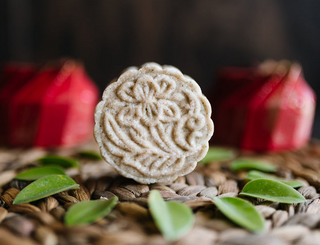Shampoo bars have been making waves in the beauty and eco-conscious communities. These solid, soap-like alternatives to liquid shampoos have gained popularity due to their eco-friendly claims and compact packaging. In this complete guide, we'll dive into the pros and cons of using shampoo bars. Whether you're considering making the switch or just curious about the trend, we've got you covered.
Table of Contents:
1. What Are Shampoo Bars?
2. The Pros of Using Shampoo Bars
2.1. Environmentally Friendly
2.2. Travel-Friendly
2.3. Long-Lasting
2.4. Natural Ingredients
3. The Cons of Using Shampoo Bars
3.1. Transition Period
3.2. Hard Water Challenges
3.3. Limited Variety
3.4. Packaging Predicament
4. How to Choose the Right Shampoo Bar
5. How to Use Shampoo Bars
1. What Are Shampoo Bars?
Shampoo bars are solid bars of soap-like hair cleansers. They are typically made from natural ingredients and without the plastic packaging commonly associated with traditional liquid shampoos. Shampoo bars come in various formulations to cater to different hair types and concerns.
2. The Pros of Using Shampoo Bars
2.1. Environmentally Friendly
Shampoo bars are celebrated for their environmental benefits. Here's why:
Zero Plastic Waste: Shampoo bars are usually sold without plastic packaging, reducing plastic waste.
Water Conservation: They require less water to produce and use, contributing to water conservation.
Lighter Carbon Footprint: The compact size of shampoo bars means reduced transportation emissions, making them more eco-friendly.
2.2. Travel-Friendly
Shampoo bars are a traveler's dream:
Compact and TSA-Approved: These small, lightweight bars easily fit in your luggage, meeting airport security requirements.
No Leaky Bottles: No more worrying about shampoo spilling in your bag during your travels.
2.3. Long-Lasting
A little goes a long way with shampoo bars:
Economical: Shampoo bars last longer than their liquid counterparts, saving you money in the long run.
No Overuse: They're easy to control and reduce overuse compared to liquid shampoos.
2.4. Natural Ingredients
Shampoo bars often contain natural and nourishing ingredients:
Chemical-Free: Many shampoo bars are free from harsh chemicals, making them a gentler option for your hair.
Customizable: You can find bars designed for different hair types and concerns, catering to your specific needs.
3. The Cons of Using Shampoo Bars
3.1. Transition Period
Transitioning to shampoo bars can be a bit tricky:
Residue Buildup: Some users experience a transition period during which hair may feel waxy or heavy as it adjusts to the new product.
Adjusting Expectations: Be patient and give your hair time to adapt to the new routine.
3.2. Hard Water Challenges
Shampoo bars might not work well with hard water:
Soap Scum: Hard water can react with the soap in shampoo bars, leaving a residue on your hair.
Chelating Shampoos: You may need to use a chelating shampoo occasionally to remove mineral buildup.
3.3. Limited Variety
Shampoo bars come with fewer options:
Specific Formulations: Finding the right formula for your hair type can be a bit challenging.
Scent and Texture: Limited choices in scents and textures compared to liquid shampoos.
3.4. Packaging Predicament
While they are generally eco-friendly, packaging can still be a concern:
Initial Packaging: Some shampoo bars may come wrapped in plastic initially, though this is often less plastic overall.
Storage: You'll need a soap dish or a container to keep your shampoo bar dry between uses.
4. How to Choose the Right Shampoo Bar
Identify your hair type and specific needs.
Look for bars with natural, eco-friendly ingredients.
Read reviews and consider recommendations from friends or online communities.
5. How to Use Shampoo Bars
Wet your hair and the shampoo bar.
Rub the bar between your hands or directly onto your hair to create lather.
Massage the lather into your hair and scalp.
Rinse thoroughly.
6. Conclusion: Are Shampoo Bars Right for You?
In conclusion, shampoo bars offer a range of benefits, from environmental friendliness to travel convenience and natural ingredients. However, they may not be suitable for everyone due to the transition period, hard water issues, limited variety, and packaging concerns. Ultimately, the decision to use shampoo bars depends on your individual preferences and hair type. Consider giving them a try and see if they are the right fit for you and our planet. Happy shampooing!
Table of Contents:
1. What Are Shampoo Bars?
2. The Pros of Using Shampoo Bars
2.1. Environmentally Friendly
2.2. Travel-Friendly
2.3. Long-Lasting
2.4. Natural Ingredients
3. The Cons of Using Shampoo Bars
3.1. Transition Period
3.2. Hard Water Challenges
3.3. Limited Variety
3.4. Packaging Predicament
4. How to Choose the Right Shampoo Bar
5. How to Use Shampoo Bars
6. Conclusion: Are Shampoo Bars Right for You?
1. What Are Shampoo Bars?
Shampoo bars are solid bars of soap-like hair cleansers. They are typically made from natural ingredients and without the plastic packaging commonly associated with traditional liquid shampoos. Shampoo bars come in various formulations to cater to different hair types and concerns.
2. The Pros of Using Shampoo Bars
2.1. Environmentally Friendly
Shampoo bars are celebrated for their environmental benefits. Here's why:
Zero Plastic Waste: Shampoo bars are usually sold without plastic packaging, reducing plastic waste.
Water Conservation: They require less water to produce and use, contributing to water conservation.
Lighter Carbon Footprint: The compact size of shampoo bars means reduced transportation emissions, making them more eco-friendly.
2.2. Travel-Friendly
Shampoo bars are a traveler's dream:
Compact and TSA-Approved: These small, lightweight bars easily fit in your luggage, meeting airport security requirements.
No Leaky Bottles: No more worrying about shampoo spilling in your bag during your travels.
2.3. Long-Lasting
A little goes a long way with shampoo bars:
Economical: Shampoo bars last longer than their liquid counterparts, saving you money in the long run.
No Overuse: They're easy to control and reduce overuse compared to liquid shampoos.
2.4. Natural Ingredients
Shampoo bars often contain natural and nourishing ingredients:
Chemical-Free: Many shampoo bars are free from harsh chemicals, making them a gentler option for your hair.
Customizable: You can find bars designed for different hair types and concerns, catering to your specific needs.
3. The Cons of Using Shampoo Bars
3.1. Transition Period
Transitioning to shampoo bars can be a bit tricky:
Residue Buildup: Some users experience a transition period during which hair may feel waxy or heavy as it adjusts to the new product.
Adjusting Expectations: Be patient and give your hair time to adapt to the new routine.
3.2. Hard Water Challenges
Shampoo bars might not work well with hard water:
Soap Scum: Hard water can react with the soap in shampoo bars, leaving a residue on your hair.
Chelating Shampoos: You may need to use a chelating shampoo occasionally to remove mineral buildup.
3.3. Limited Variety
Shampoo bars come with fewer options:
Specific Formulations: Finding the right formula for your hair type can be a bit challenging.
Scent and Texture: Limited choices in scents and textures compared to liquid shampoos.
3.4. Packaging Predicament
While they are generally eco-friendly, packaging can still be a concern:
Initial Packaging: Some shampoo bars may come wrapped in plastic initially, though this is often less plastic overall.
Storage: You'll need a soap dish or a container to keep your shampoo bar dry between uses.
4. How to Choose the Right Shampoo Bar
Identify your hair type and specific needs.
Look for bars with natural, eco-friendly ingredients.
Read reviews and consider recommendations from friends or online communities.
5. How to Use Shampoo Bars
Wet your hair and the shampoo bar.
Rub the bar between your hands or directly onto your hair to create lather.
Massage the lather into your hair and scalp.
Rinse thoroughly.
6. Conclusion: Are Shampoo Bars Right for You?
In conclusion, shampoo bars offer a range of benefits, from environmental friendliness to travel convenience and natural ingredients. However, they may not be suitable for everyone due to the transition period, hard water issues, limited variety, and packaging concerns. Ultimately, the decision to use shampoo bars depends on your individual preferences and hair type. Consider giving them a try and see if they are the right fit for you and our planet. Happy shampooing!

